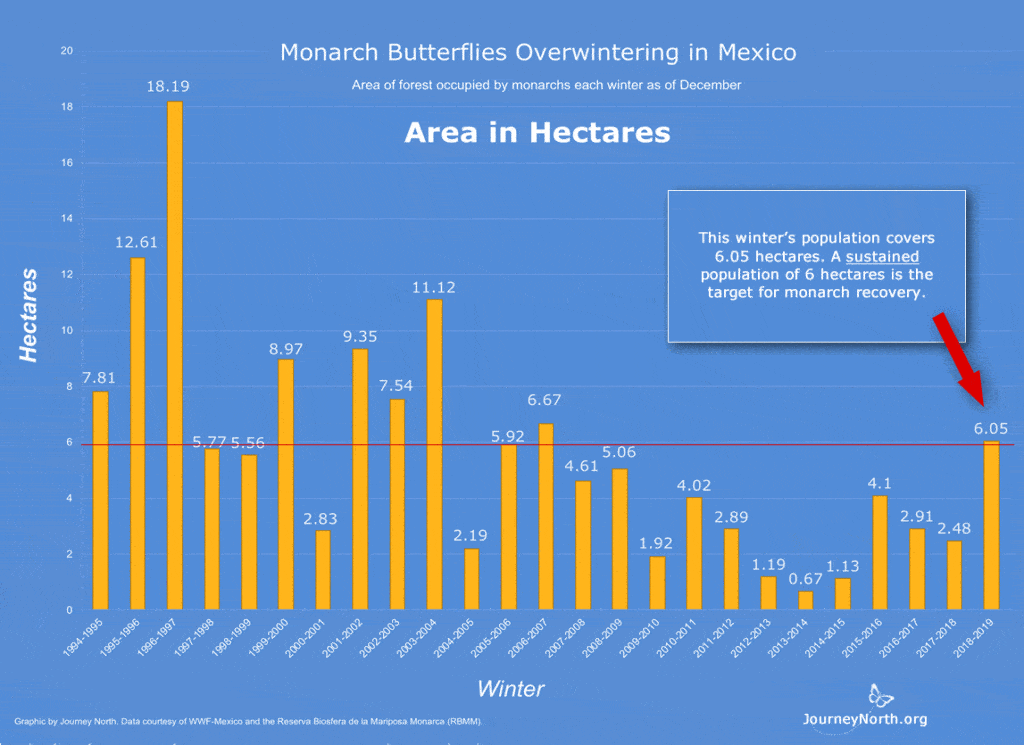Maryland Monarchs Mount Momentous Migration

By Matthew Liptak
It’s time to say goodbye again to our magnificent monarch butterflies. This beautiful pollinator is about to make its way to Mexico again on an epic 3,000-mile journey. Multiple events have been scheduled to celebrate the send off of the beleaguered butterfly.
“As a child there was an abundance,” recalled Chesapeake Wildlife Heritage Field Biologist Andi Pupke. “Their magnificence is spectacular. There’s no other migration like it—besides their sheer beauty and grace.”
The inspiring insect makes a multi-generational trip to and from a single location in Mexico each year, reaching the border of Canada at its zenith. Monarchs incrementally travel north each year, laying eggs and letting the next generation do the next leg of flying north in the warm season, until the last leg when they bulk up and head back the full 3,000 miles to Mexico.
That’s what Maryland monarchs are preparing to do. A number of local organizations believe that epic journey is worthy of celebration.
Chesapeake Wildlife Heritage, on Kent Island, is holding its Magnificent Monarchs Workshop on Sep. 25 at 10 am. Those attending will learn firsthand about the butterfly’s migration from staff and also help them tag monarchs so they can be tracked before their trip south. The popular event has already filled up, but there is a wait list (410-822-5100).
But all are welcome to celebrate the monarchs’ big adventure and the migrations of other wildlife in North Beach, Saturday, Sept. 18 (8-11am) at the Farmers Market. There will be a monarch butterfly tagging demonstration, milkweed meadow seedball making, coloring for the kids (and the kids at heart), and monarch-themed giveaways.
The event is made possible through a partnership between the North Beach Department of Community Conservation and the North Beach House and Garden Club. For more details contact Lisa Garrett at 443-646-2426 or email her at [email protected],
“We’re talking about migration celebration,” Garrett said. “The idea is to help people know about all the creatures that leave here in the fall. They should come to the migration celebration so they can learn a little bit more. People are very amazed at a small monarch going all the way to Mexico.”
As for the monarch populations, they remain low and the species is in peril. They can use all the human help and support they can get.
“Since 1990 we’ve lost 90 percent of the population and oscillated back and forth,” Pupke said. “We’ve been hovering around critical mass for the last seven or eight years.”
Pupke said “critical mass” is the population size where species are considered sustainable by scientists. “Once we get below that it can be pretty scary,” she said.
On the bright side, Pupke noted that in the fields she tends, the number of monarch caterpillars was up slightly. And in 2019 the population rebounded somewhat by more than doubling in size, raising the hope that their annual flight will endure for more years to come.
Weather can greatly affect their survival rate, as does habitat loss and insecticide use. Winter storms where they winter in Mexico caused major loss of the species in recent years.
But there is hope. Participating in programs and talking about the monarch butterfly spreads the word that they are in need of help. And the simple act of planting a few milkweed next spring can attract this lovely pollinator right to your doorstep, so you can take in its beauty yourself in person.
“You can do your part right in your own yard,” Garrett noted.
“The more people we educate…you help preserve a little bit more of the milkweed,” Pupke said. “I’m a little bit concerned we can’t save them in our flyway. You can’t give up the ship. You’ve got to keep trying. It’s an all-hands-on-deck situation.”
Visit journeynorth.org to find out about the migration of the monarchs as well as that of ospreys, hummingbirds, orioles, and hawks.

